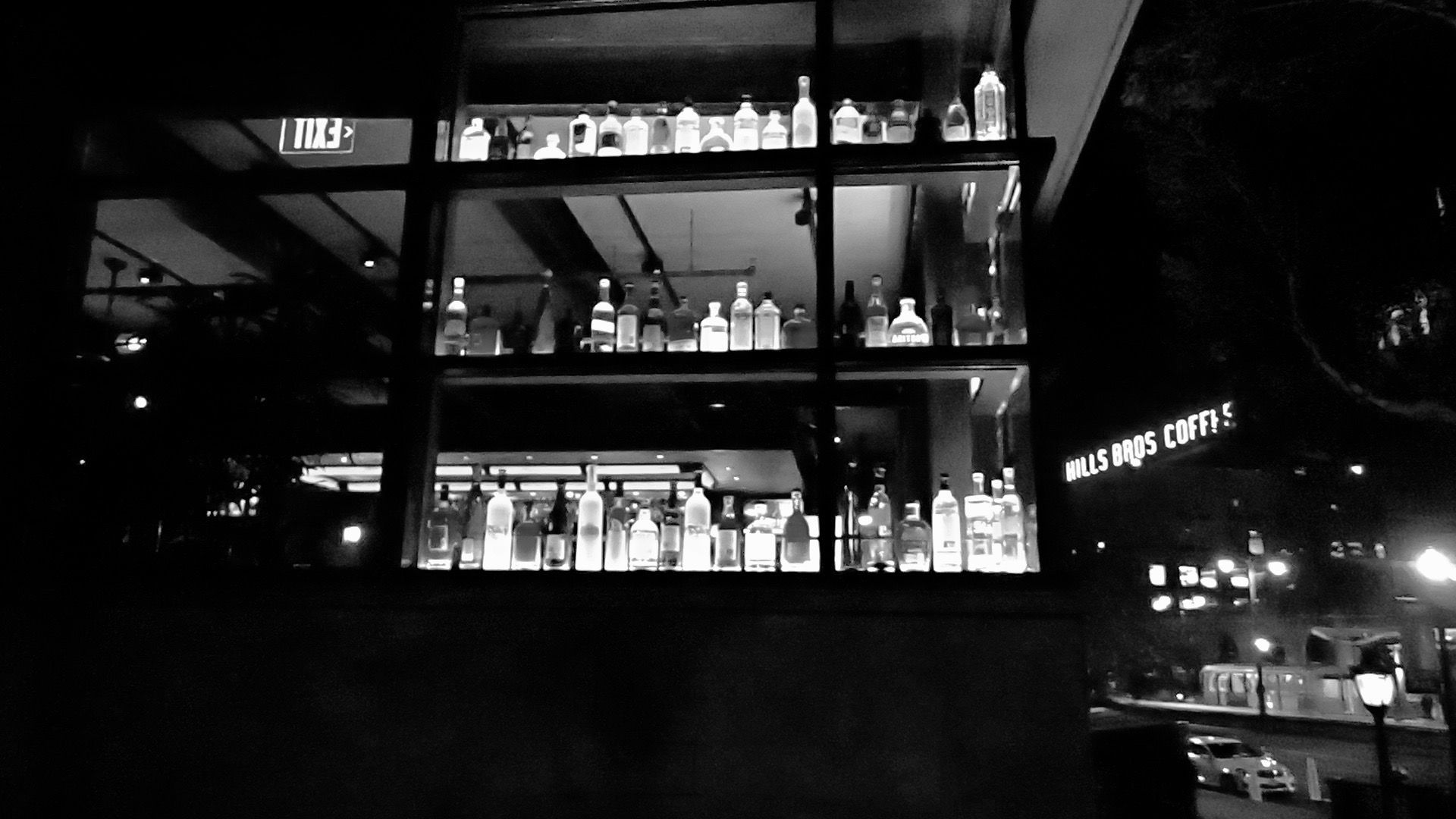Canadians have tried to cope with the miseries of COVID-19 in many ways, including spending more time on the internet, watching television, eating junk food and playing board and video games. Another method, for at least 23 per cent of Canadians, has been increased drinking throughout the pandemic.
In British Columbia, there was a 40 per cent spike in alcohol sales after the first lockdown was announced; private vendors in the province have since reported an 18.5 per cent increase in total sales between March and July compared to the previous year. In Manitoba, liquor sales from the provincial stores between March and May increased by 25 per cent from the prior year, especially on large amounts of alcohol, such as boxed wine, 24-can boxes of beer, or 1.75-litre bottles of spirits.
Motivations for this increase are fairly predictable: lack of a regular schedule, boredom, stress, loneliness and a stockpiling of alcohol. The intersecting and escalating crises of mass social murder, evictions, unemployment, police violence, climate chaos, government austerity, loss of community, lack of access to affordable mental health resources, and widespread capitalist plundering are enough to drive anyone to seek some momentary reprieve.
At the same time, governments have made it easier than ever to acquire and consume alcohol in the name of supporting businesses, including Ontario and Alberta legislating the temporary takeout and delivery of alcohol by licensed restaurants and bars as permanent, and several Metro Vancouver municipalities permitting drinking in public parks and spaces.
These trends and changes may seem both understandable and progressive, loosening draconian laws against alcohol sales that are disproportionately enforced against Indigenous and Black people — especially those who are poor, unhoused or otherwise targets of policing and displacement.
Unfortunately, the increase in drinking and loosening of laws during this pandemic is primarily benefiting the alcohol and hospitality industries, as well as the state, at the direct expense of the health and well-being of the most oppressed and exploited communities. A recent commentary in the Drug and Alcohol Review argued: “To the extent that the relaxed policy environment has boosted sales, alcohol producers and off‐premise retailers are actually benefiting from the present crisis.”
In the process, people with histories of alcohol dependency have been re-exposed to potential harm, with even scarcer support options available than ever. Few outside of public health circles are discussing this.
The only people who benefit from this silence are those who directly profit from alcohol sales. We need to finally talk about alcohol.
Acknowledging The Harms
To talk about alcohol does not mean advocating for a new Prohibition or blaming individual drinkers.
Rather, it means acknowledging the specific material impacts that alcohol usage causes, particularly given that per-capita consumption is projected to only continue increasing in future years. As Cree lawyer and author Harold R. Johnson argued in his book Firewater: How Alcohol is Killing My People (and Yours), “Alcohol creates its own trauma.”
To ignore or downplay this trauma is to impede any ability to identify and hold responsible those who benefit most from an ever-increasingly alcogenic society, which is necessary, just as we should do for those benefiting from the harms caused by tobacco, fossil fuel, and automobiles.
Alcohol consumption is causally linked to more than 200 acute and chronic health conditions. As a known carcinogen, drinking increases risk levels for at least six types of cancer including mouth and throat, liver, colorectal, and breast. A recent study published in the BMC Public Health journal found that drinking a single bottle of wine per week has equivalent cancer risk to smoking five to 10 cigarettes. In fact, there is no safe level of alcohol to consume.
In 2016, alcohol use killed at least 3 million people around the world — accounting for 5.3 per cent of all deaths — with most of these deaths caused by injuries, digestive and cardiovascular diseases, and cancers. Moreover, an estimated 630,000 children are born with fetal alcohol syndrome every year around the world.
In 2016, at least 77,000 Canadians were hospitalized due to conditions entirely caused by alcohol, including chronic alcohol use disorder, alcohol withdrawal, harmful alcohol use, and cirrhosis. That number didn’t include conditions partially caused by alcohol use — such as cancer, motor vehicle injuries, and violence — yet it was still higher than all hospital admissions for heart attacks in the same time period.
There are many other alcohol-related harms of particular significance throughout this pandemic: increased risk for respiratory issues and weakened immune systems that in turn exposes people to disease transmission; higher probability of domestic violence and interpersonal conflicts with fewer places to escape to; worsening of depression, anxiety, and suicide rates.
Bars have also been a central hotspot for the spread of COVID-19 due to a combination of poor ventilation, close proximity, not being able to drink with a mask on and reduced inhibition undermining social distancing. The World Health Organization (WHO) even had to issue a statement that alcohol consumption doesn’t protect people from COVID-19.
None of these facts award a fantastical power to alcohol or deny the fun, relaxation and solidarity that can be experienced while drinking. Rather, they reflect the deeply material qualities of the substance and focus attention on the industry’s role in expanding access to alcohol while failing to curtail its many harmful impacts.
Alcohol Production Creates The Consumer
The increasingly concentrated and powerful global alcohol industry, which includes retailers such as bars and liquor stores, depends on high-risk levels of drinking to expand its profitability.
This is not a conspiracy theory.
The WHO reported in its 2018 Global Status Report On Alcohol and Health that “very significant proportions of the commercial alcohol market are consumed in heavy drinking occasions […] meaning the central interests of alcoholic beverage producers are inherently at odds with the public health interest.” Similarly, a 2016 article published in Drug and Alcohol Review by 10 public health experts from New Zealand, Australia, Thailand, Vietnam, and Mongolia argued that “data show that effective action to reduce harmful use of alcohol would cut significantly into the transnational alcohol corporations’ sales and profits.”
In her final media statement of 2020, Canada’s Chief Public Health Officer Theresa Tam specifically called for Canadians to limit their alcohol consumption during New Year celebrations and adhere to Canada’s low-risk drinking guidelines. But these guidelines — which recommend no more than 10 “standard drinks” a week for women and 15 for men — are confusing and outdated.
The alcohol industry has consistently railroaded attempts to inform consumers of the cancer-causing properties of alcohol. In late 2017, a groundbreaking pilot project that stuck unmissable warning labels on bottles at a Whitehorse, Yukon, liquor store was suspended after industry organizations threatened litigation.
In November, Mothers Against Drunk Driving Canada called for the federal government to require warning labels on alcohol products. Amazingly, there are no nutritional labels at all on alcohol products in Canada, a decision that Health Canada has repeatedly defended on the basis of not wanting to imply that alcohol has a nutritional benefit — a claim that seems especially hollow given mandatory labelling on everything from junk food, to edibles, to non-alcoholic beer.
Similarly, while there are strict plain packaging requirements for cannabis and tobacco in Canada, alcohol companies are permitted to market their products with increasingly creative and artistic designs. Plain packaging regulations would cost alcohol companies worldwide at least $430 billion USD in brand value, according to a 2019 Brand Finance study.
The industry’s extensive corporate social responsibility (CSR) efforts — including public education campaigns, corporate philanthropy and appeals to “self-regulation” — have been criticized as protecting corporate interests and undermining public health messaging. Many of these campaigns invoke discourses of “personal responsibility” that blame harmful impacts on individual “problem drinkers,” all the while failing to clarify what it even means to “drink responsibly.”
Meanwhile, the industry continues to push its product on people. Companies spend billions every year on global advertising, For example, AB InBev — which owns Budweiser, Corona and Stella Artois — is the ninth largest advertiser in the world, spending $6.2 billion on it in 2017.
The industry is also increasingly eying underdeveloped countries in Africa and elsewhere as profitable markets, with an especially cynical recent analysis concluding that “a hot climate might be expected to exaggerate the demand for beer and big brewers are investing for the future.” In the process, long-standing cultural norms that regulate alcohol use are being eroded.
These are textbook examples of capitalist profiteering at the direct expense of the health and safety of communities. This doesn’t deny the agency of people who choose to drink, but rather acknowledges Marx’s pivotal argument that “production thus creates the consumer.”
As writer Robert Faivre argued in 2003, recreational consumption of alcohol — requiring enormous amounts of grain that could otherwise be used to produce nutritious food — is “a symptom of the irrationality of organizing production for profit.”
Not Letting Industry Off The Hook
The go-to leftist response to alcohol-related harms is to advocate for a redirection of focus toward why people drink and the social relations underpinning the crisis. The subsequent solutions are routine demands: housing, healthcare, mental health and substance use resources, ending capitalist alienation, and so on.
While this analysis is unequivocally correct, it’s only half the story. By failing to specifically confront the escalating power and profit motive of the alcohol industry, the material source of these harms are left untouched. It’s like organizing against police violence without focusing on police power, or climate change without targeting fossil capital.
Friedrich Engels knew this, which is why his 1845 book The Condition of the Working Class in England simultaneously explained alcohol consumption as the “necessary, inevitable effect of certain conditions upon an object possessed of no volition in relation to those conditions” while also calling attention to legislation that “facilitated the spread of intemperance by bringing a beerhouse, so to say, to everybody’s door.”
Calls for public ownership of producers and retailers of alcohol is a positive step in this direction, tending to mean fewer alcohol sales and less consumption and harm. But as exemplified by the lengthy history of alcohol policy in the Soviet Union, state control of the industry is not sufficient.
Soviet leader Mikhail Gorbachev’s Anti-Alcohol Campaign of 1985 to 1988 represented a rare instance of a government taking alcohol harms seriously, including limiting production of alcohol, restricting the location and time of its sale, increasing its price, subsidizing alternative activities, waging a major public health campaign and increasing access to treatment for people with dependence issues. While widely regarded as a failure due to its unpopularity and short lifespan, the campaign resulted in a sizable decline in consumption of alcohol, even with the growth of illegal moonshine factored in.
Public health experts have learned a great deal about alcohol use since that campaign, including the importance of harm reduction efforts like managed alcohol programs, especially for people drinking non-beverage alcohol such as mouthwash, and the limits of recovery programs based on a disease model of addiction like Alcoholics Anonymous.
The Future Of Alcohol
Alcohol causes serious harm, and capitalists have vested interests in limiting stronger regulations that may hinder growth plans.
These realities mean that leftists must fight to address the reasons people drink — such as alienation, precarious work and housing, and lack of social supports — while also working to limit the incredible power and influence of the alcohol industry.
Important changes could include: imposing far stricter limits on alcohol advertising and lobbying; rebuffing attempts to further deregulate where and how alcohol can be sold; introducing prominent warning labels and plain packaging of products; increasing resources to harm reduction like managed alcohol programs; launching comprehensive public education campaigns; opposing efforts to further privatize the selling of alcohol; producing low- and no-alcohol beverages as viable alternatives; building social spaces that don’t revolve around the consumption of alcohol.
Most fundamentally, it means struggling for the collective ownership of the means of production in order to reallocate labour and resources to socially beneficial ends. Such a future may involve alcohol in some capacity, but it should be one in which its many harms are known and meaningfully reduced.






